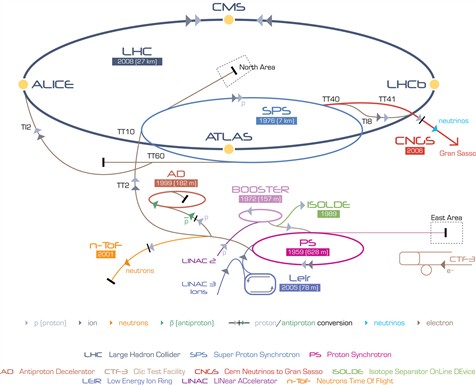
Particles are supplied to the LHC by six accelerators inter-connected by several kilometres of transfer lines. This represents yet another complex chain of processes whereby particles are produced, bunched, synchronised and injected into the LHC at the precise moment it's ready to receive them. In other words, for collisions to be produced at the end of the chain, all the injectors must be in perfect working order.
>>